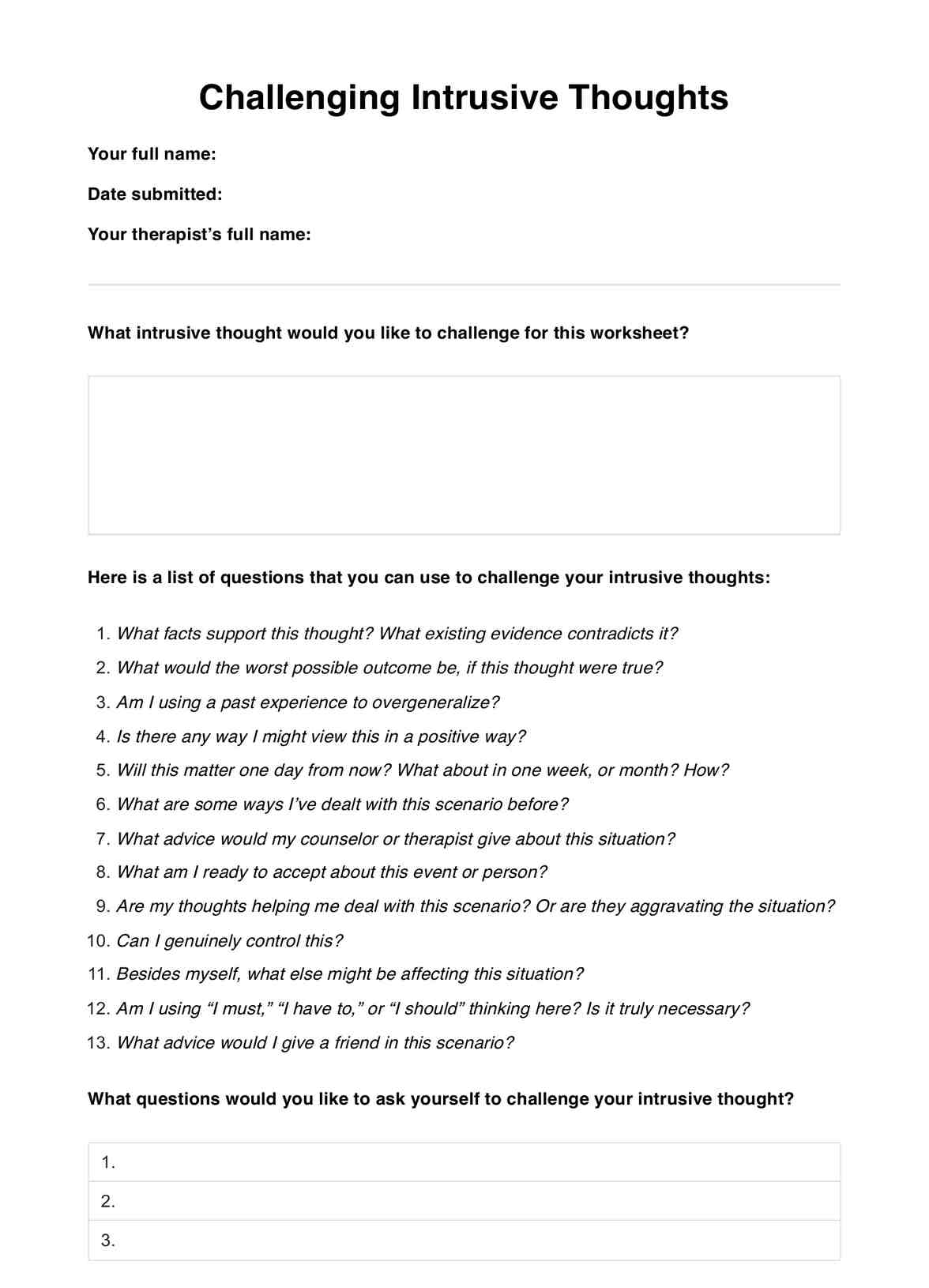If you look at the instructions, you'll notice that they are simple enough to follow, but that doesn't mean there won't be any difficulty. This worksheet asks clients to examine their intrusive thoughts, which might be difficult! You best provide them with the time and space they need to finish it. Provide support and encouragement when you can.

Challenging Intrusive Thoughts Worksheet
Help your client challenge and defeat their intrusive thoughts during your therapy sessions with Challenging Intrusive Thoughts worksheet. Download a free template and example today!
Challenging Intrusive Thoughts Worksheet Template
Commonly asked questions
That depends on whether you issued this during a therapy session or had your client take it home. If you issued this during a therapy session, you can agree on a time limit with your client but don't pressure them. If they need more time than your session allows, have them take it home and submit it during the next appointment.
Yes! By all means, go ahead if you think it will benefit you. However, don't use this as a substitute for therapy. If you feel like you need help from a therapist, please enroll yourself in a therapy program. That way, you will have an expert to help navigate you throughout your healing journey.
EHR and practice management software
Get started for free
*No credit card required
Free
$0/usd
Unlimited clients
Telehealth
1GB of storage
Client portal text
Automated billing and online payments











